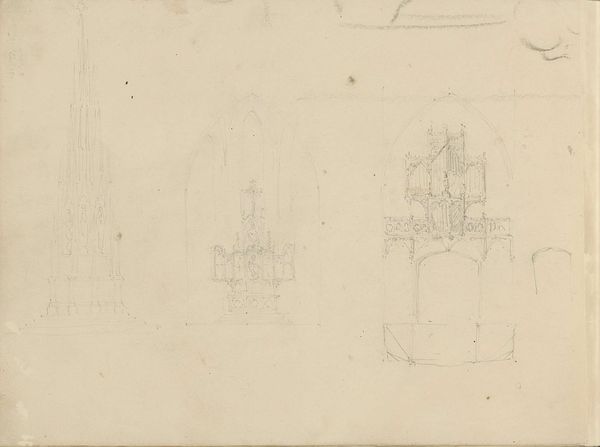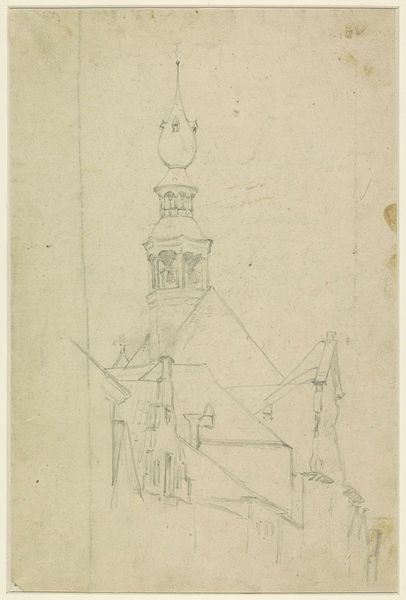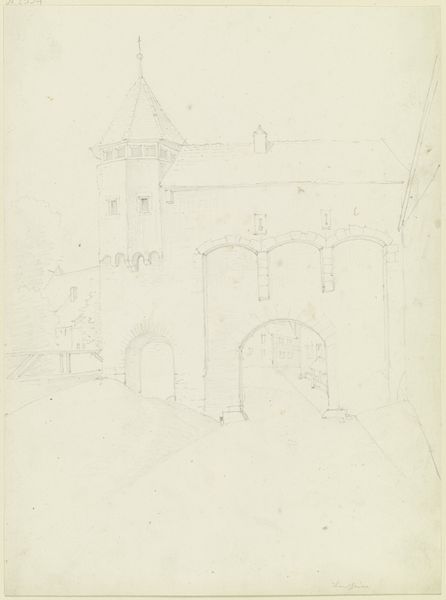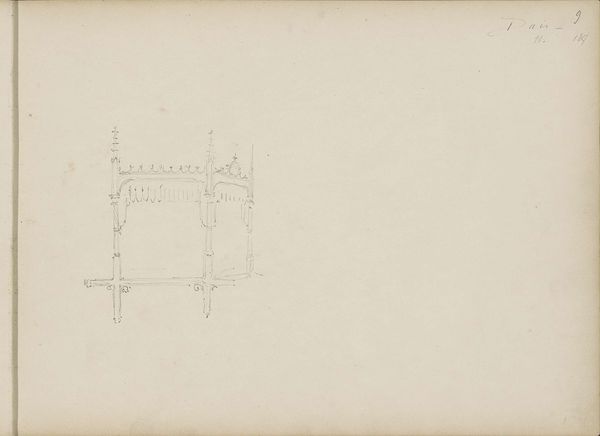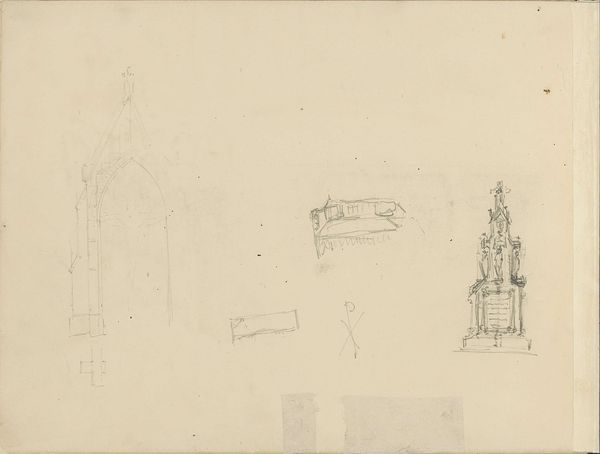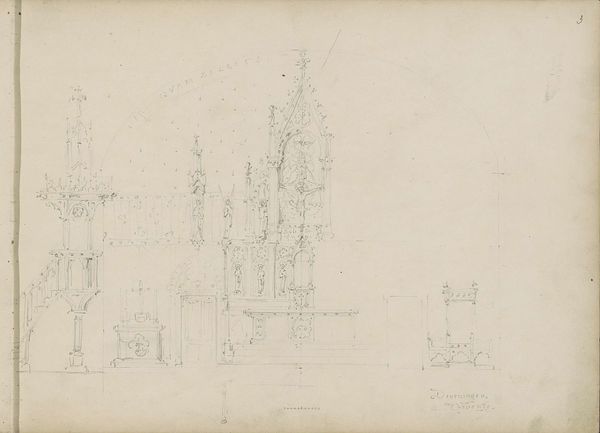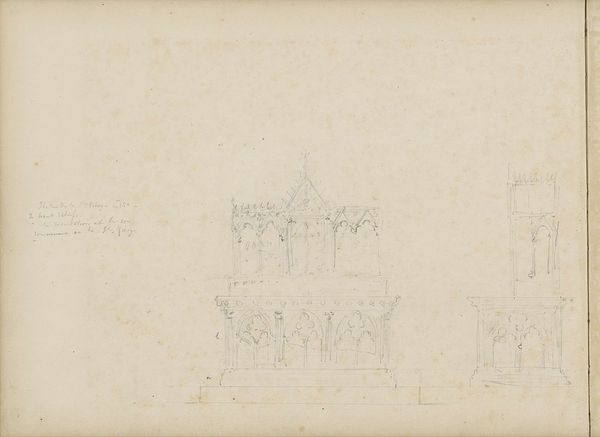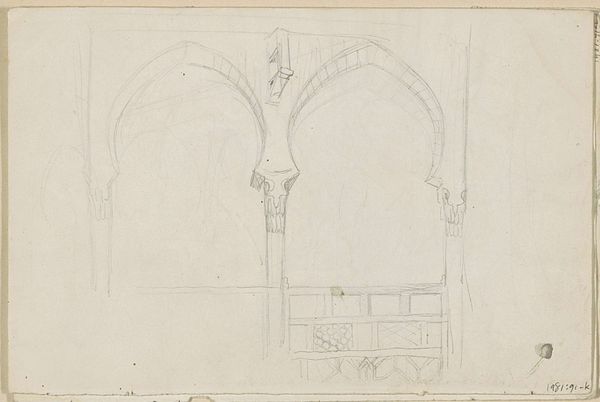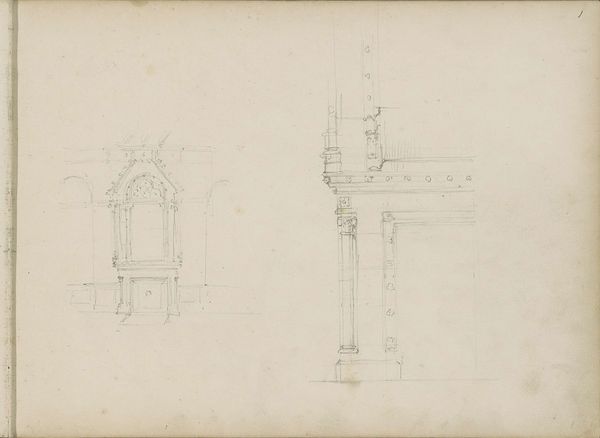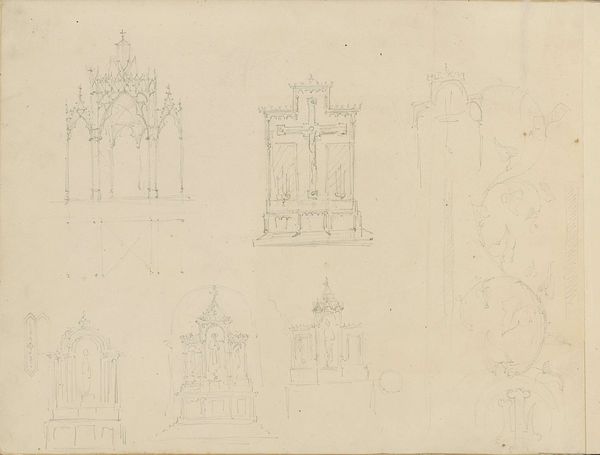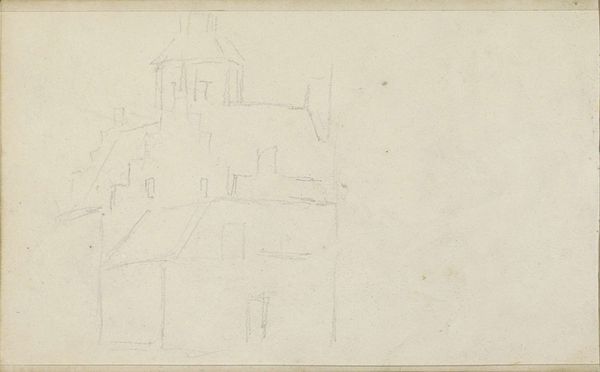
drawing, pencil
#
drawing
#
pencil sketch
#
landscape
#
form
#
pencil
#
line
#
academic-art
#
realism
Copyright: Rijks Museum: Open Domain
Editor: Here we have "Prieel," a pencil drawing from around 1850 by Pierre Joseph Hubert Cuypers, housed at the Rijksmuseum. It’s quite simple, really, almost architectural. What do you see in this unassuming sketch? Curator: The beauty lies precisely in its seeming simplicity. Consider the gazebo itself. It's an opening, a gateway. Throughout history, such structures, from triumphal arches to humble doorways, have served as symbolic thresholds. What do you think this particular gateway is promising the viewer? Editor: Perhaps a transition? A passage from one space to another. It feels very skeletal, though, like it's under construction or maybe even decaying. Curator: Exactly! The ephemerality of the structure, suggested by the artist’s delicate rendering, infuses the work with a sense of *vanitas*. What might such architectural fragility convey to viewers in the mid-19th century, a period of enormous societal change? Editor: Maybe a caution against putting too much faith in material structures? Everything eventually crumbles? Curator: A keen observation. The skeletal structure, while appearing simple, speaks volumes. Notice how Cuypers uses light and shadow to articulate form, even in such a sparse representation. Does this limited palette limit or heighten the meaning? Editor: I think it heightens it. The starkness draws attention to the fundamental structure, to the very *idea* of a gazebo, rather than its specific details. It's almost an archetype. Curator: Precisely. The image serves as a reminder of the enduring power of fundamental forms and symbols across time, inviting viewers to ponder their meaning and significance within our cultural memory. Editor: I hadn't considered all of those symbolic layers present in something that seemed like a straightforward drawing. Curator: Often, it’s in the quietest works that the most profound ideas reside, echoing through centuries.
Comments
No comments
Be the first to comment and join the conversation on the ultimate creative platform.

